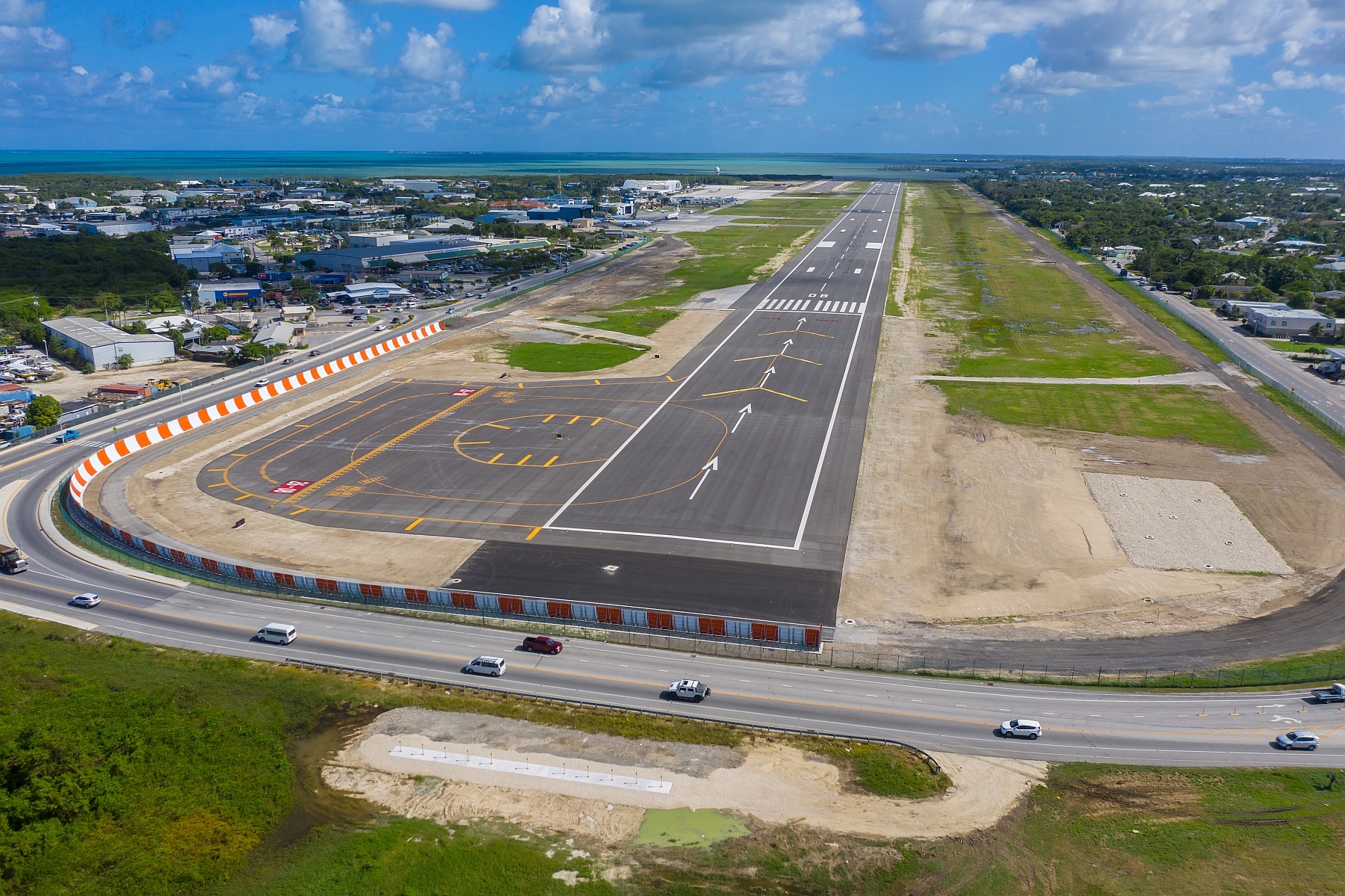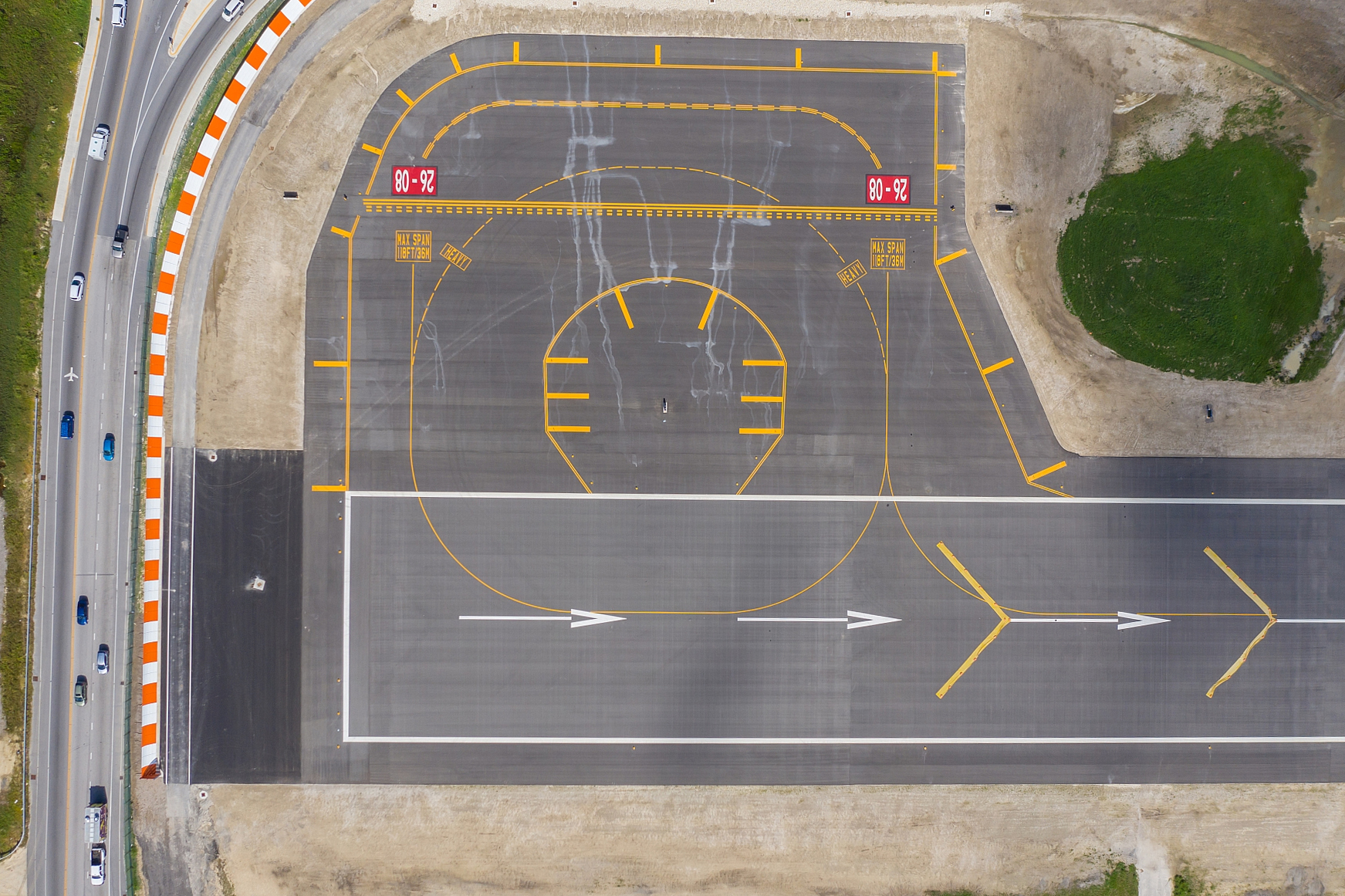A year ago, as COVID-19 was beginning to wreak economic havoc worldwide, the project team working on upgrades to a key airport on the Cayman Islands found itself in the unique position of benefiting somewhat from the pandemic. Faced with the difficult task of having to upgrade the airport’s only runway while it remained operational, the project team suddenly had much more flexibility to operate once the island nation had sealed its borders, dramatically limiting flights to Owen Roberts International Airport on Grand Cayman, the largest of the nation’s islands.
Designed by Stantec, the project conducted by the Cayman Islands Airports Authority involved airfield improvements intended to facilitate increased tourism and economic development for the Cayman Islands. The contractor was a joint venture comprising two Caymanian companies — Island Paving (1985) Ltd. and Decco, a subsidiary of Dart Enterprises, the multi-industry conglomerate owned by billionaire investor Ken Dart — and the Canadian company IDL Projects Inc.
Accommodating larger aircraft
The first major improvements to the air-side infrastructure in about 20 years, the project enabled the airport to accommodate larger aircraft while improving safety and efficiency, says Leigh Bartlett, P.E., M.ASCE, a principal with Stantec’s Airports Group and the company’s project manager for the airfield upgrades. In recent years, the airport has been receiving growing numbers of large, wide-body aircraft, Bartlett notes. As a result, airport officials “knew that they needed the runway pavement to be strengthened,” he says. “They also wanted to lengthen the runway so that they could improve safety and allow for longer nonstop flights.”

Strengthening the existing runway entailed milling about 25 mm of pavement to remove surface cracks and deterioration before adding 180 mm of new polymer-modified asphalt that is designed to prevent the formation of ruts in hot climates. Complicating matters, the asphalt had to be applied in three 60 mm lifts, Bartlett says. “You can’t just add 180 mm of asphalt all at once,” he notes.
Given its importance as a critical element of infrastructure on Grand Cayman Island, the runway at Owen Roberts International Airport could not be shut down completely during construction. “This is their only runway on the island,” Bartlett says. “When you have a one-runway situation and it’s such a key piece of infrastructure, you can’t shut (it) down,” he says. With this in mind, the project team “spent a lot of time with the airport planning on how we were going to do this around an active runway,” he says.
Continuing despite the pandemic
However, the onset of the COVID-19 pandemic in early March 2020, just two months after the start of construction, presented an entirely unexpected, and unique, opportunity. “There was a question of whether the project would keep going,” Bartlett says, especially once it became clear that the Cayman Islands was going to close its borders. Stantec’s on-site engineers and many foreign employees of the joint venture contractor opted to remain on Grand Cayman to see the project through. “Everyone resolved to keep going with the project. It was just some really great cooperation between the airport authority, the contractor, and Stantec,” Bartlett says. “(Everyone) showed great dedication and flexibility.”
Ultimately, what enabled the project to proceed during the pandemic was the fact that the airport and contractor fortuitously had preordered most of the materials before the start of construction, Bartlett says. “That really saved the project because when COVID happened, materials were hard to get,” he notes.
The number of flights per day declined substantially after the Cayman Islands closed its border. “That presented a huge opportunity to work on the runway,” Bartlett says. “This allowed great flexibility to the contractor, in that they had much longer periods when the runway was closed.”
The detailed preparations conducted in advance of construction also helped the project team adjust quickly to the new situation and manage the necessary changes created by COVID, according to Bartlett. Despite the challenges of working during the pandemic, the contractor completed construction on schedule in the fall.
Making other improvements
Other aspects of the project included lengthening the runway by 868 ft, which created a new maximum takeoff length of 7,460 ft, Bartlett says. (The aviation industry around the world measures runways in feet, even if a country uses the metric system). The longer runway required the installation of blast deflectors along one end of the airfield to deflect jet blasts into the air and away from vehicles on a nearby roadway.

A parallel taxiway and a taxiway turnaround were added to improve safety and increase efficiency. Having a width of 23 m and 7.5 m wide shoulders, the parallel taxiway was designed to accommodate aircraft as large as those designated as Code E by the International Civil Aviation Organization of the United Nations. Code E aircraft have wingspans ranging from 52 to 65 m. The taxiway turnaround is large enough to enable Code E aircraft to turn around, while smaller planes may use the turnaround to leave the runway and hold while another aircraft is landing.
The project also included the construction of a new multistand parking apron able to accommodate up to four additional aircraft. Consisting of 14,000 sq m of concrete pavement and 17,000 sq m of asphalt pavement, the apron is designed to accommodate two Code E aircraft or four Code C aircraft, which have wingspans of between 24 and 36 m.

As a result of the airfield improvements, Owen Roberts International Airport enjoys “increased air traffic control and management capacity,” says Wayne DaCosta, the chief airport operations officer for the Cayman Islands Airports Authority. The airport “can now handle on average 18 to 20 aircraft movements per hour,” DaCosta says. “Previously, we were limited to approximately six to eight aircraft movements per hour.”
The added capacity brings with it environmental benefits as well. “Aircraft will not have to burn as much fuel as they likely would have in the past while waiting for landing and takeoff,” DaCosta says. Along with improving air quality, this change also reduces noise because aircraft no longer need to hold as long for parking spaces, he notes. That said, the “ultimate benefit is to facilitate increased business and tourism travel, thus contributing to the overall economic growth and sustenance of the Cayman Islands,” DaCosta says.




